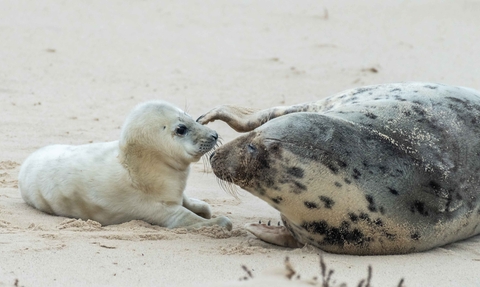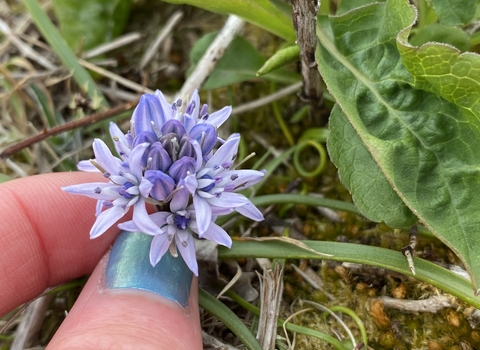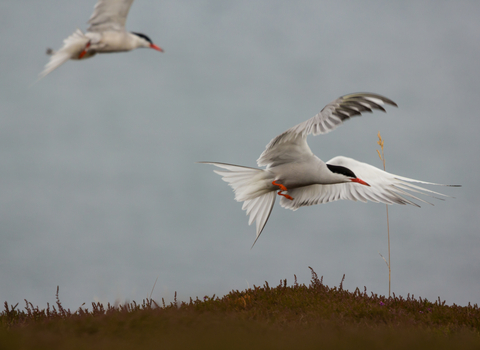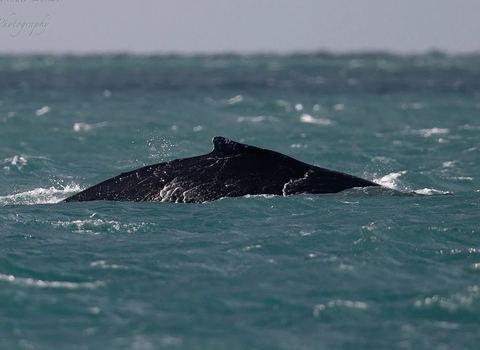
Grey seal
Autumn wildlife on Scilly
Autumn exploration
Much like spring, autumn on Scilly can be changeable and unpredictable. Some days are wild and stormy, as big Atlantic weather systems race across the ocean and batter the islands, bringing high winds and plentiful rain. On others, it can feel as though summer has never left the islands, with a stillness and warmth exuding from the granite rocks. This contrast makes Scilly a fascinating place in autumn, and it's the time of year most popular with visiting avid birdwatchers.
Autumn sees an annual influx of birders from across the UK and beyond, keen to find and see some of the rarities that end up on Scilly during migration. In recent years, the star species have come from America, with the first sighting in England of a Blackburnian warbler (which stayed on Bryher for sixteen days in 2022) and a black-and-white warbler on Tresco the year before. We have been treated to red-eyed vireos, yellow-billed Cuckoos, Blyth's pipits, grey-cheeked thrushes, Swainson's thrushes, a hermit thrush and plenty more. Even on a quiet day, it would be normal to see common migrants like wrynecks, black redstarts, yellow-browed warblers, firecrests or little buntings.
This is top time to watch grey seals and even to catch a glimpse of a pure white pup. This internationally rare species pups between August and November; take a boat trip to the Western Rocks or Eastern Isles to be in with a chance of spotting a youngster on a beach. The adults leave the pups at just three weeks old, so it's not unusual to come across a juvenile resting on one of the busier beaches (read what to do here). The adults are also mating around now so are very active right across the archipelago. This can also be one of the best times to see a 'super pod' of common dolphins, where hundreds of them gather together just offshore. From the headlands, look for big feeds of gannets diving headfirst into the water; often you'll see the fins of dolphins, porpoises or even whales breaking the surface below.
In land, this can be a great time to spot different species of fungi and plants. In 2022, a number of red-caged fungus (otherwise know as latticed stinkhorn) erupted around the islands, and it's not unusual to see parasol, yellow fieldcap and bloody brittlegill, especially amongst pine trees. One of Scilly's three orchid species - the autumn lady's tresses - is most commonly seen in the early autumn around the Garrison and Harry's Walls, and as the year progresses, you have a chance of seeing the tiny least adder's-tongue fern on Wingletang, St Agnes, as it 'flowers' late in the year.
You can enjoy the last of the year's moths and butterflies around now, too, including migrants like the hummingbird hawk-moth, death's-head hawk-moth and even rarer still, the speckled crimson moth. Clouded yellow butterflies mark the end of the year, and the last dragonflies you'll spot include common darters and migrant hawkers.



